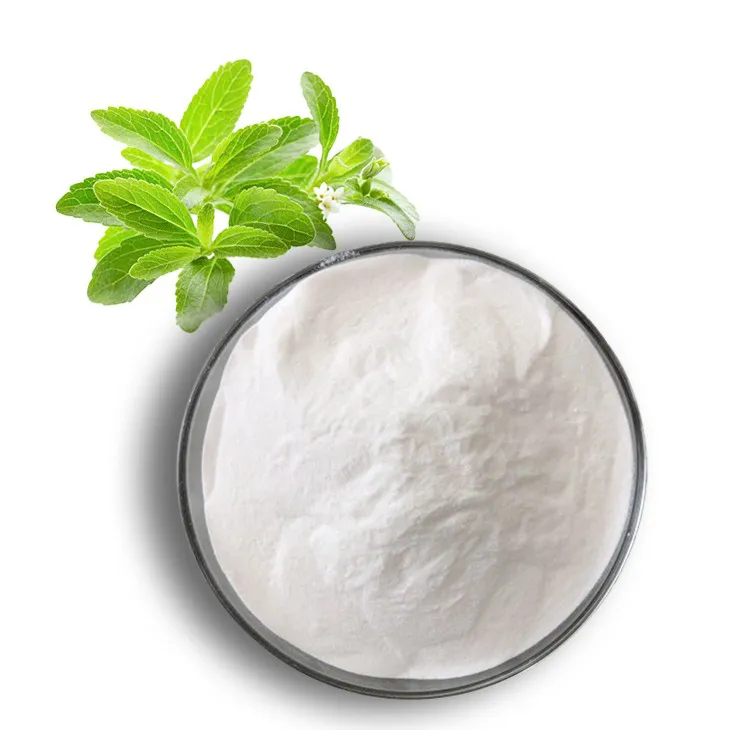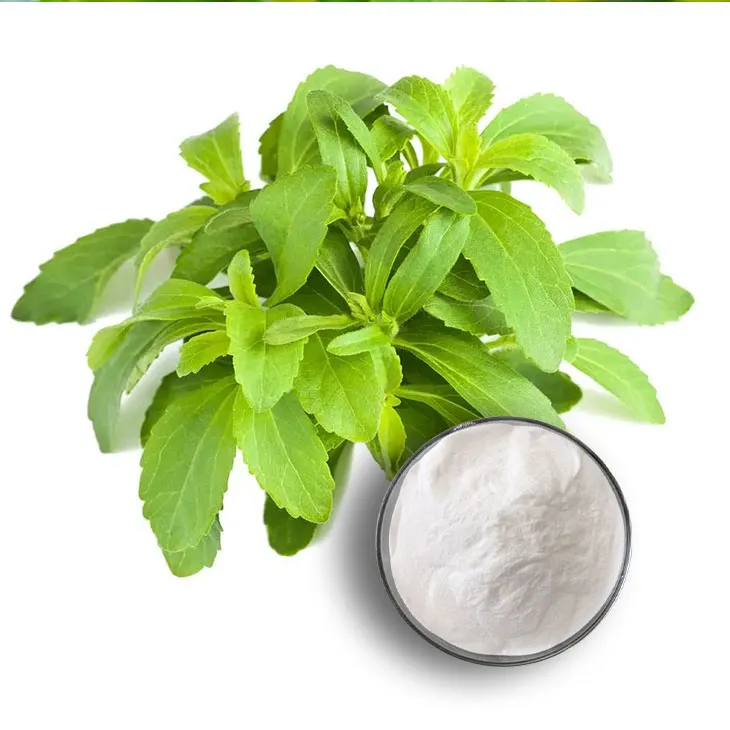- 0086-571-85302990
- sales@greenskybio.com
Factors Influencing the Cost of Establishing a Stevia Extraction Plant
2024-08-05

1. Introduction
The establishment of a Stevia Extraction plant involves multiple aspects, and each of these aspects contributes to the overall cost. Stevia, a natural sweetener, has been gaining increasing popularity in recent years due to its zero - calorie property. As a result, more and more enterprises are considering setting up Stevia Extraction plants. However, understanding the factors that influence the cost is crucial for making informed investment decisions.

2. Cost of Raw Materials Procurement and Storage
Raw materials procurement cost is one of the primary considerations in the establishment of a Stevia Extraction plant. Stevia leaves are the main raw material for extraction. The cost of procuring stevia leaves can be influenced by several factors.
2.1. Source of Stevia Leaves
- If the plant sources stevia leaves from local farmers, the cost may be affected by the local agricultural conditions. For example, in regions with favorable climates and rich soil, the yield of stevia may be high, which could potentially lead to lower procurement costs. However, in areas with harsh environmental conditions, the supply may be limited, driving up the cost. - Importing stevia leaves from other countries also has its own cost implications. There may be tariffs, transportation costs, and quality control issues associated with imported raw materials. For instance, long - distance transportation requires proper packaging and refrigeration to maintain the freshness of the leaves, which adds to the cost.
2.2. Quality Requirements
- High - quality stevia leaves with a high steviol glycoside content are preferred for extraction. To obtain such leaves, the plant may need to pay a premium price. Quality control measures during procurement, such as testing for pesticide residues, heavy metals, and the purity of steviol glycosides, also incur additional costs. - Different grades of stevia leaves are available in the market, and the choice of grade depends on the intended use of the extracted stevia. Higher - grade leaves are generally more expensive but can result in better - quality extracts.
2.3. Seasonal Variations
- Stevia is a seasonal crop, and the availability and price of stevia leaves can vary throughout the year. During the peak harvesting season, the supply is abundant, and the price may be relatively lower. However, during the off - season, the plant may have to rely on stored inventory or pay higher prices for limited supplies. - To ensure a continuous supply of raw materials throughout the year, some plants may choose to enter into long - term contracts with suppliers. While this can provide price stability, it may also limit the plant's flexibility in sourcing from other potentially cheaper suppliers.
Raw materials storage cost is another important aspect.
2.4. Storage Facilities
- Adequate storage facilities are required to store stevia leaves properly. These facilities need to maintain appropriate temperature, humidity, and ventilation conditions to prevent spoilage and degradation of the leaves. Constructing and maintaining such storage facilities can be costly. - The size of the storage facility depends on the expected volume of raw materials intake. Larger storage facilities require more capital investment in construction and equipment such as refrigeration units, dehumidifiers, and ventilation systems.
2.5. Inventory Management
- Efficient inventory management is crucial to minimize storage costs. This includes proper stock rotation, inventory tracking, and forecasting of raw material needs. Implementing an inventory management system incurs costs in terms of software, hardware, and personnel training. - Over - stocking can lead to increased storage costs and the risk of spoilage, while under - stocking can result in production disruptions. Therefore, finding the right balance in inventory levels is a challenge that also affects the overall cost.

3. Facility Construction Costs
Building construction is a significant part of the facility construction costs.
3.1. Site Selection
- The location of the plant site can have a major impact on construction costs. If the site is in an area with high land prices, such as in a prime industrial zone or near a major city, the cost of acquiring the land will be substantial. - Additionally, the site's geographical characteristics matter. For example, if the site is on a sloping terrain, additional earth - moving and foundation - strengthening work may be required, increasing construction costs.
3.2. Building Design and Size
- The design of the building needs to meet the specific requirements of stevia extraction processes. This may include areas for raw material handling, extraction equipment installation, purification, and product packaging. A more complex and specialized building design will generally cost more. - The size of the building is determined by the expected production capacity of the plant. Larger plants require bigger buildings, which not only have higher construction costs but also incur more expenses in terms of building maintenance and utilities.
3.3. Construction Materials
- The choice of construction materials affects both the initial construction cost and the long - term durability of the building. High - quality, durable materials may be more expensive initially but can reduce maintenance costs over time. For example, using corrosion - resistant materials in areas exposed to chemicals during the extraction process can extend the building's lifespan. - In some cases, specialized construction materials may be required to meet regulatory or safety requirements. For instance, if the extraction process involves the use of flammable solvents, fire - resistant building materials may be necessary, adding to the cost.
Utilities installation also forms a considerable part of the facility construction costs.
3.4. Electrical Systems
- Stevia extraction plants typically require a significant amount of electrical power for various equipment such as crushers, extractors, and centrifuges. Installing a reliable and high - capacity electrical system involves costs related to power transformers, wiring, and electrical panels. - Power backup systems, such as generators, may also be necessary to ensure continuous operation in case of power outages. The cost of these backup systems depends on their capacity and the type of fuel they use.
3.5. Plumbing and Water Systems
- A proper water supply system is essential for stevia extraction, as water is used in various stages of the process, such as washing the raw materials and diluting the extracts. Installing water pipes, pumps, and water treatment facilities incurs costs. - Wastewater treatment is also a crucial aspect. Since the extraction process may generate wastewater containing impurities and chemicals, a wastewater treatment system needs to be in place to meet environmental regulations. The cost of wastewater treatment equipment and its operation can be significant.
3.6. Heating, Ventilation, and Air Conditioning (HVAC) Systems
- The extraction process may require specific temperature and humidity conditions. HVAC systems are installed to control the indoor environment. These systems need to be designed to handle the heat generated by the extraction equipment and maintain the appropriate air quality. - The cost of HVAC systems depends on their size, capacity, and energy - efficiency rating. Higher - efficiency systems may have a higher initial cost but can result in lower energy consumption and operating costs in the long run.
Infrastructure development is yet another component of facility construction costs.
3.7. Access Roads and Parking Areas
- Adequate access roads are necessary for the transportation of raw materials and finished products. Constructing access roads on the plant site, especially if the terrain is difficult, can be costly. - Parking areas for employees and visitors also need to be provided, which incurs additional land and construction costs.
3.8. Waste Disposal Facilities
- The extraction process generates waste materials such as spent stevia leaves and by - products from purification. Proper waste disposal facilities, such as landfills or composting areas, need to be developed. The cost of waste disposal includes not only the construction of the facilities but also the ongoing operation and maintenance costs. - In some cases, waste may need to be treated or recycled before disposal, which adds further costs to the waste management process.

4. Research and Development Costs for Optimizing the Extraction Process
Process optimization research is essential for a stevia extraction plant to improve efficiency and product quality while reducing costs.
4.1. Laboratory Equipment and Facilities
- To conduct research on the stevia extraction process, a well - equipped laboratory is required. This includes equipment such as chromatographs for analyzing the composition of stevia extracts, spectrometers for studying the chemical properties of steviol glycosides, and extraction apparatus for testing different extraction methods. - The cost of purchasing and maintaining these laboratory equipments can be substantial. Additionally, laboratory facilities need to meet safety and environmental requirements, which may involve additional construction and modification costs.
4.2. Research Personnel
- Hiring qualified research personnel, such as chemists, biochemists, and process engineers, is necessary for conducting research on the extraction process. These professionals command high salaries due to their specialized knowledge and skills. - Training and development of research personnel also incur costs. They need to stay updated with the latest scientific research and technological advancements in the field of stevia extraction.
4.3. Experimental Materials and Consumables
- During the research process, various experimental materials and consumables are used. These include stevia samples of different qualities and origins, solvents for extraction, and reagents for chemical analysis. The cost of these materials can add up, especially when conducting a large number of experiments. - Ensuring the quality and purity of these materials is crucial, as any impurities can affect the results of the research. This may require additional quality control measures and costs.
Patent and Intellectual Property Costs are also associated with research and development in the stevia extraction field.
4.4. Patent Application and Protection
- If the plant develops a new and innovative extraction process or product, it may choose to apply for patents to protect its intellectual property. The process of patent application involves legal fees, filing fees, and the cost of preparing patent documentation. - Once a patent is granted, there are also ongoing costs associated with maintaining and defending the patent against potential infringement.
4.5. Licensing and Technology Transfer
- In some cases, the plant may need to license certain technologies or processes from other companies or research institutions. The cost of licensing agreements can be significant, depending on the nature and value of the technology being licensed. - Technology transfer may also involve additional costs such as training employees on the new technology and adapting the plant's existing processes to incorporate the licensed technology.

5. Conclusion
Establishing a stevia extraction plant is a complex and costly endeavor. The cost is influenced by multiple factors, including raw materials procurement and storage, facility construction, and research and development for process optimization. Understanding these factors and carefully managing them is essential for ensuring the economic viability of the plant. By carefully considering each aspect and making informed decisions, investors can better control the costs and increase the chances of success in the stevia extraction business.
FAQ:
What are the main raw materials for a stevia extraction plant?
Stevia leaves are the main raw material for a stevia extraction plant. These leaves are rich in steviol glycosides, which are the compounds of interest in the extraction process. Additionally, some chemicals may be required for the extraction process, such as solvents (although the choice of solvent needs to be carefully considered for food - grade extraction), and other processing aids.
How can the cost of raw materials procurement be reduced?
One way to reduce the cost of raw materials procurement is by establishing long - term contracts with stevia farmers. This can provide a stable supply at a more predictable price. Another approach is to optimize the supply chain, for example, by reducing transportation costs through better logistics planning. Additionally, investing in local stevia cultivation (if feasible) can cut down on import costs and ensure the freshness and quality of the raw materials.
What are the typical utility requirements for a stevia extraction plant?
Typical utility requirements for a stevia extraction plant include electricity for running extraction equipment, heating and cooling systems (depending on the extraction method), and water for various processes such as washing the stevia leaves and diluting solvents. Adequate ventilation systems are also necessary to maintain a safe and healthy working environment, especially when dealing with solvents or other chemicals.
How much does research and development for stevia extraction typically cost?
The cost of research and development for stevia extraction can vary widely. It depends on factors such as the complexity of the extraction process being developed, the level of technology involved, and the duration of the R & D project. Initial research into new extraction methods or improving existing ones may involve costs for laboratory equipment, hiring specialized scientists or technicians, and conducting numerous experiments. These costs can range from tens of thousands to hundreds of thousands of dollars, or even more in some cases.
What are the key factors in facility construction for a stevia extraction plant?
The key factors in facility construction for a stevia extraction plant include choosing an appropriate location. The location should have good access to transportation for raw materials and finished products, as well as proximity to utility sources. The design of the building should be optimized for the extraction process, with proper space allocation for different stages of production, storage, and quality control. Construction materials need to be suitable for handling the chemicals and processes involved, and compliance with local building and safety regulations is essential.
Related literature
- Optimization of Stevia Extraction Processes: A Review"
- "Cost - Effective Strategies in Stevia Processing Plants"
- "Raw Material Sourcing and Cost Management in Stevia Extraction"
- ▶ Hesperidin
- ▶ citrus bioflavonoids
- ▶ plant extract
- ▶ lycopene
- ▶ Diosmin
- ▶ Grape seed extract
- ▶ Sea buckthorn Juice Powder
- ▶ Beetroot powder
- ▶ Hops Extract
- ▶ Artichoke Extract
- ▶ Reishi mushroom extract
- ▶ Astaxanthin
- ▶ Green Tea Extract
- ▶ Curcumin Extract
- ▶ Horse Chestnut Extract
- ▶ Other Problems
- ▶ Boswellia Serrata Extract
- ▶ Resveratrol Extract
- ▶ Marigold Extract
- ▶ Grape Leaf Extract
- ▶ blog3
- ▶ blog4
- ▶ blog5
-
Yam Extract
2024-08-05
-
Chasteberry Extract
2024-08-05
-
Okra Extract
2024-08-05
-
Coix Seed Extract
2024-08-05
-
American Ginseng Root Extract
2024-08-05
-
Rose Hip Extract
2024-08-05
-
Konjac Powder
2024-08-05
-
Stevia Extract
2024-08-05
-
Beta Carotene
2024-08-05
-
Elderberry Extract
2024-08-05




















